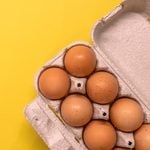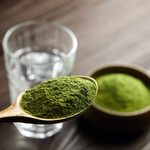8 Ways to Be Food Secure
Climate change, the recession, tainted food and high fuel prices are making many people re-think the way they shop at the grocery store.
Canadians are used to always having enough food In fact, we are so assured of a continual supply that we don’t blink an eye when it comes to waste. In 2008, Canadians threw out 7–14 million tonnes of wasted food.
Tainted food scandals
Does all this abundance mean we are eating healthier and spending less. Not necessarily. We’ve become dependent on food imported from countries with fewer health regulations and we can’t always be sure that food is safe.
Rising prices and shortages
The cost of shipping imported food is passed on to us at the grocery store and so we see our grocery bills rise as the price of oil rises.
We’ve started to see food shortages as well, brought about by climate change.. A frost in Florida, fires in Greece and earthquakes in China now affect us at the grocery store.
Back-up plan
Food security is about having a back-up plan so we are not solely dependant on imported foods. Ask yourself what would happen if your local grocery store were suddenly empty? Would you have enough food in the house to get by?
Reconnecting to our food
Author Robin Wheeler believes the way to be food secure is to return to the old-fashioned ways of our grandparents, who didn’t have the convenience of grocery stores selling strawberries in January. They put up preserves, bought local produce in season, kept a stocked pantry and always had something in the freezer. They made their homes food secure.
Wheeler shares her top eight tips from her book, Food Security for the Faint at Heart, that will help you be more food secure and save you money.
- Be prepared. Stuff happens. Earthquakes, trucker strikes, who knows; in an instant, our world could change. We should be better prepared. Start off with a pantry stocked with enough dry and canned goods for a couple of months.
- Buy in season. Fossil fuels are getting darned expensive, eh? That would explain the high cost of lettuce in January and of imported olives. Stop relying on the big box stores that have to ship everything in from afar; their prices fluctuate just like the price of oil.
- Grow your own. It can be difficult for low-income families to afford high quality food. Fortunately, it costs little to grow nutritious food so having a safe food source nearby (like your own back yard) is a great equalizer. Growing food in your garden is cheap and satisfying.
- Buy local. Support local and organic farmers. You’ll know what’s in season (and therefore cheaper) but you’ll also know who is producing your food, which gives you more security than buying from unknown overseas sources. Expand your diet to include new foods that are local or grow wild.
- Start freezing, drying or preserving fresh summer produce so you have some food in lean winter months and you won’t have to pay $5 a head for broccoli in February.
- Buy organic. Genetically Modified Organism (GMO) and pesticide can make crops more expensive to produce and that cost is passed onto the consumer. Although some say the jury is still out, my vote is in and that is for wholesome food grown without mucking about with anything made in a lab—something can reproduce in our own back yards, for instance.
- Learn how to cook from scratch—it’s cheaper and more nutritious for you.
- Become a community asset. Start sharing resources with friends and neighbours. Go to a canning workshop or take a gardening course. Enlarge your circle of connected people. In times of stress, we will need many well-informed, experienced people to spread throughout the community. You may be one of them!
Get more recipes and cooking tips delivered to your inbox when you sign up for our weekly newsletter.



